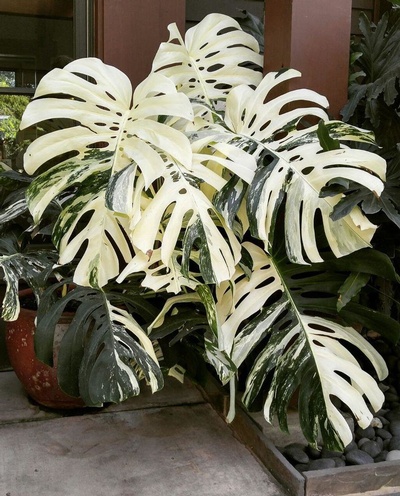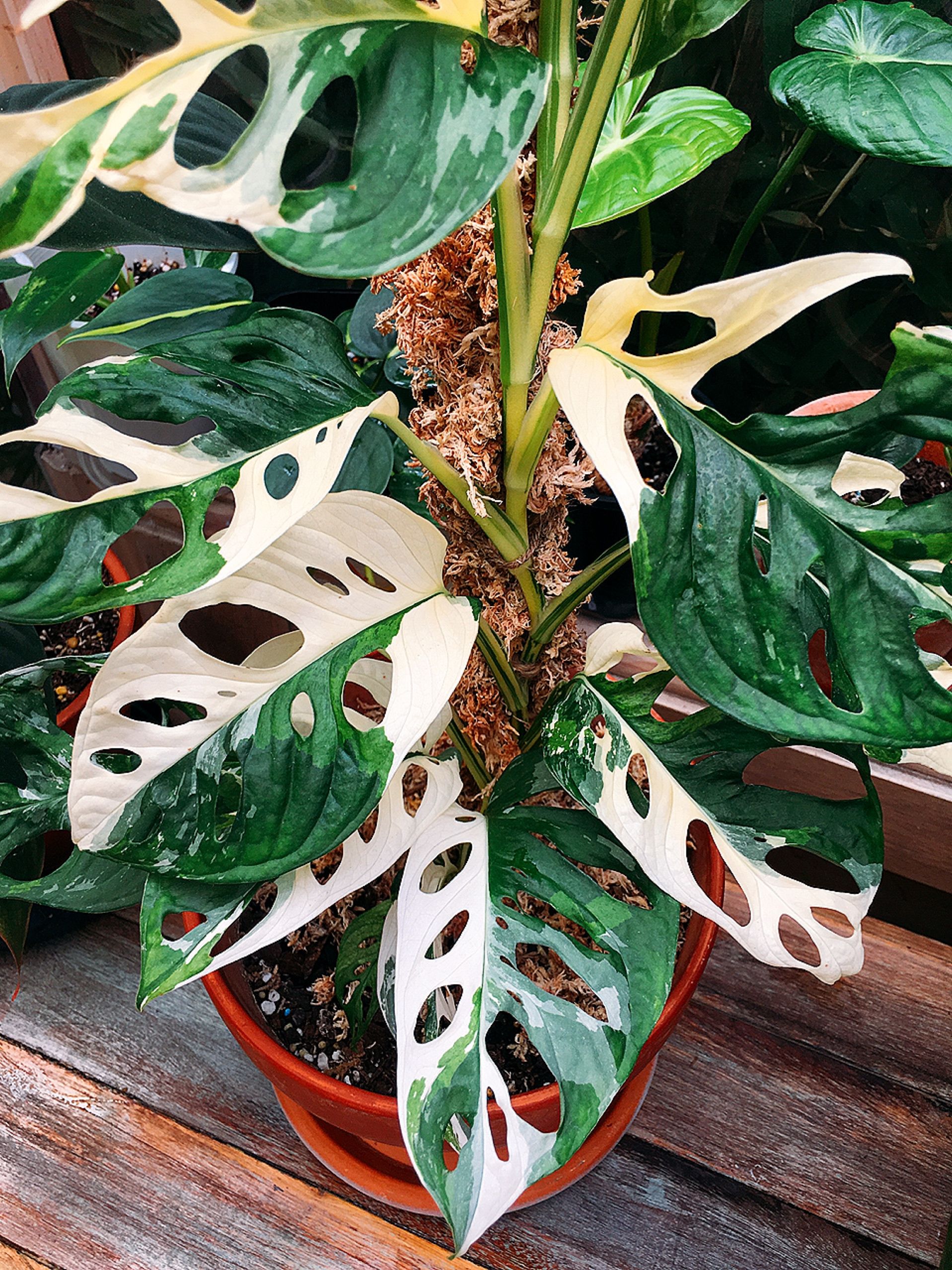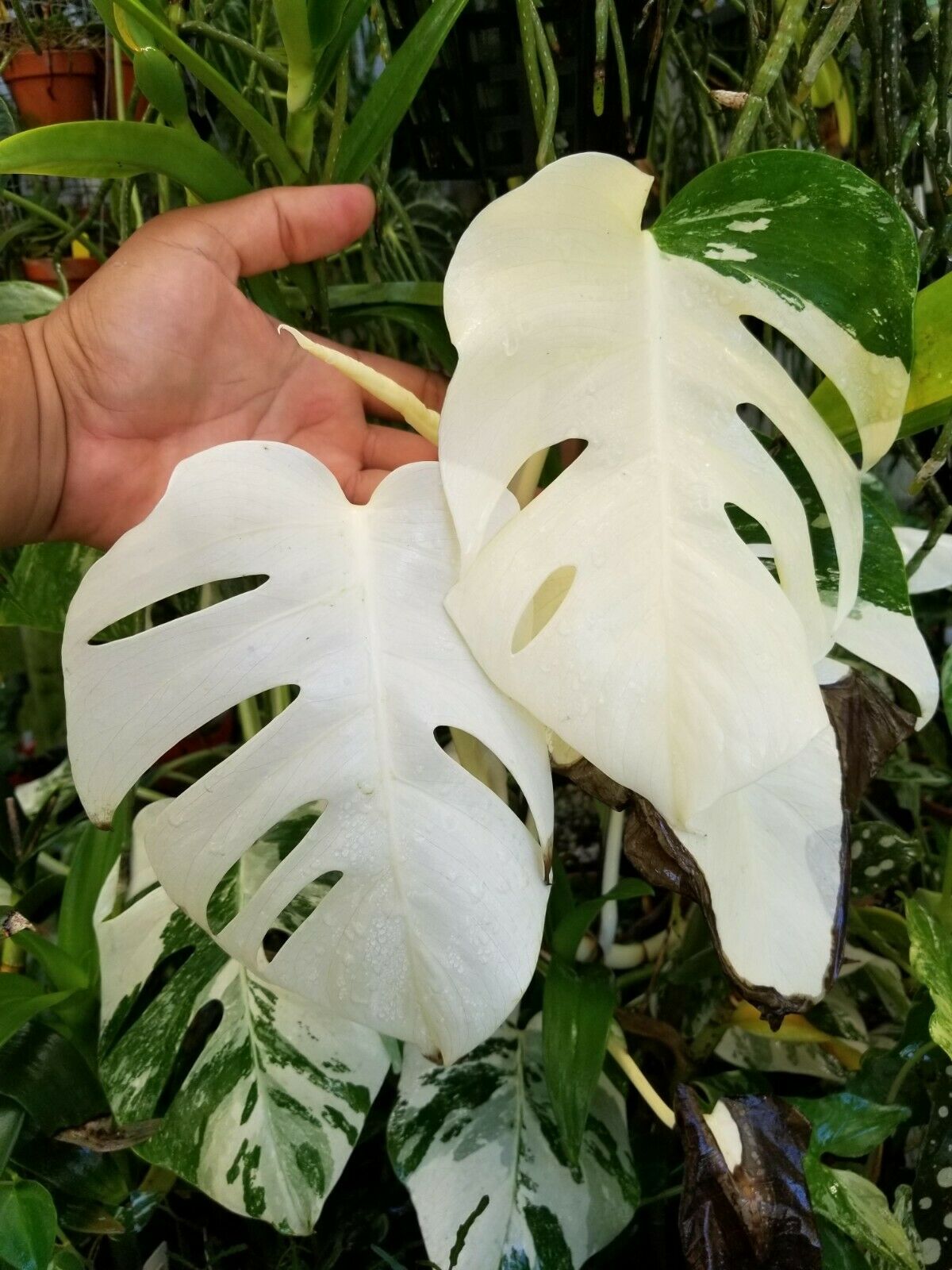Variegation

Perhaps no other trend has driven the plant market in the last few years more than variegation. We’ve all seen photos of Monstera albos with their gleaming white half-moon or chunky creamy patches. But just what is variegation and what does it mean in terms of plant care?
What is variegation?
At a basic definition, variegation is when leaves or flowers present with more than one colour. It comes in many forms, but can occur naturally or due to genetic mutations.
Different types of variegation:

Natural variegation: These are patterns that occur naturally. The pattern is coded into the DNA of the plant, so each leaf presents in the same way. Through selective cultivation, horticulturalists are able to modify or accentuate the patterns into new cultivars.

Chimeral variegation: This is a genetic mutation where some cells of the plant do not contain chlorophyll. As a result the plant may have white or yellow sections on the leaves and stems. While this is very attractive and desirable for collectors, the variegation is typically not stable and efforts must be taken to maintain it. Oftentimes these plants grow slower and are more delicate because the cells without chlorophyll are unable to photosynthesize to produce energy for the plant.
How to care for variegated plants
Fortunately plants with natural variegation have no risk of losing their natural patterning as it is coded into their DNA makeup. However chimeral variegation is not stable and some effort must be taken to maintain it.
If you think of a leaf as a solar panel that collects energy for the plant, you can think of chimeral variegation as a broken part of that panel. It is made up of cells that lack the chlorophyll which plants use to photosynthesize to make their energy. So one way to maintain the desirable variegation is to give the plant adequate light so it can still photosynthesize with its reduced chlorophyll cells. While increasing light does not guarantee increased variegation, insufficient light does mean the plant will have to work harder to feed itself. Often in lower light variegated plants will “revert” or return to their normal colour in an effort to survive.
If you do have a plant that is starting to revert, you may need to chop it back to the last part of the plant where it had a good balance of variegation. This will encourage the plant to put out new growth and with luck that variegation will come back.

Sometimes a plant with variegation takes it to the extreme and only puts out all white leaves. This is disastrous to the plant as it is expending a lot of resources but it has no chlorophyll to use in photosynthesis. If this happens, it is necessary to chop it back to the last part of the plant where there was a good balance of white and green.
White variegation: Here for a good time, not a long time
We’ve all seen photos on social media of absolutely stunning white variegation on plants. What’s often not shown is that white variegation is very quick to brown. And because it is essentially useless to the plant, it tends to be the first part of the leaf that the plant sacrifices. This means that pristine white variegation is only around for a short time. In order to maintain it for longer, you can increase humidity to prevent crispiness and make sure the leaves do not get burned by too much direct sunlight. You should also avoid touching the white parts of leaves as any surface damage will be very visible.
Finding Variegated Plants:
Variegated Plants are a hot commodity and so they are more and more available now as cuttings or fully established plants. But for those of you with eagle eyes, you may be lucky enough to come across a regular plant with a sport variegation.

Sport variegation is when a plant randomly puts out a new leaf that has some variegation. This is an error that occurs at the DNA level where the cells failed to copy the code properly. It is possible to find plants in stores that feature sport variegation. It can feel like winning the lottery, especially when variegated versions of normal green plants can sometimes be priced many times higher. If you find sport variegation, there is a chance that you can take a cutting from it to start a new variegated plant. This is how all variegated plants started at one point.
Hot Tip: Be sure to look at the stem of the plant. You will have an increased chance of success if the variegation is on the stem and not just on the leaf.